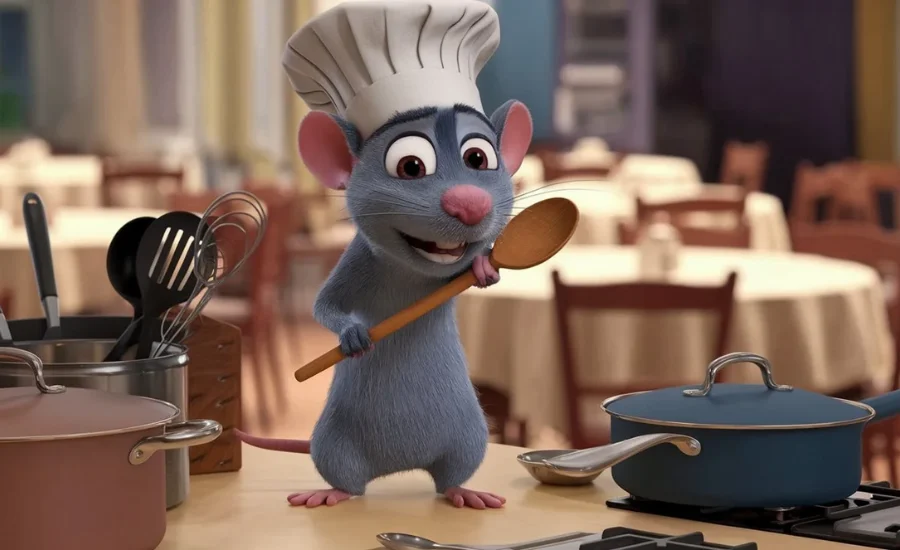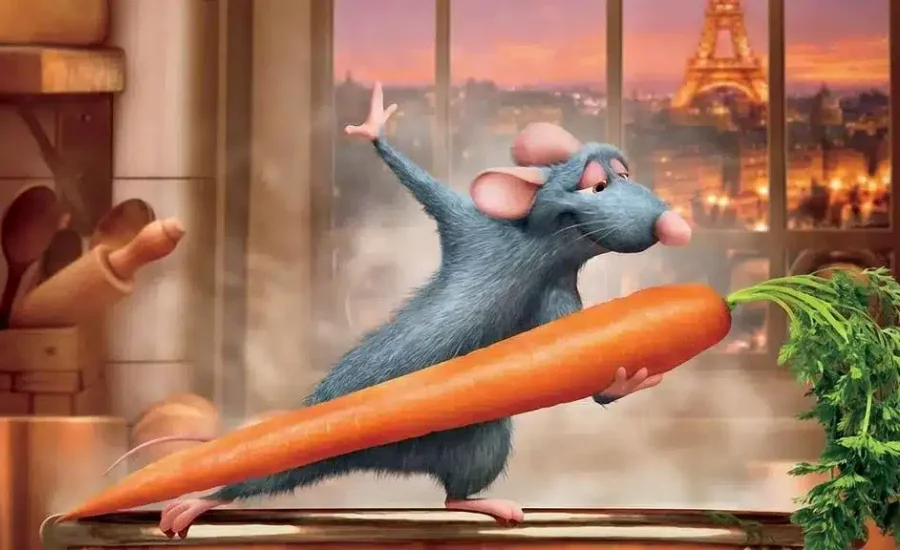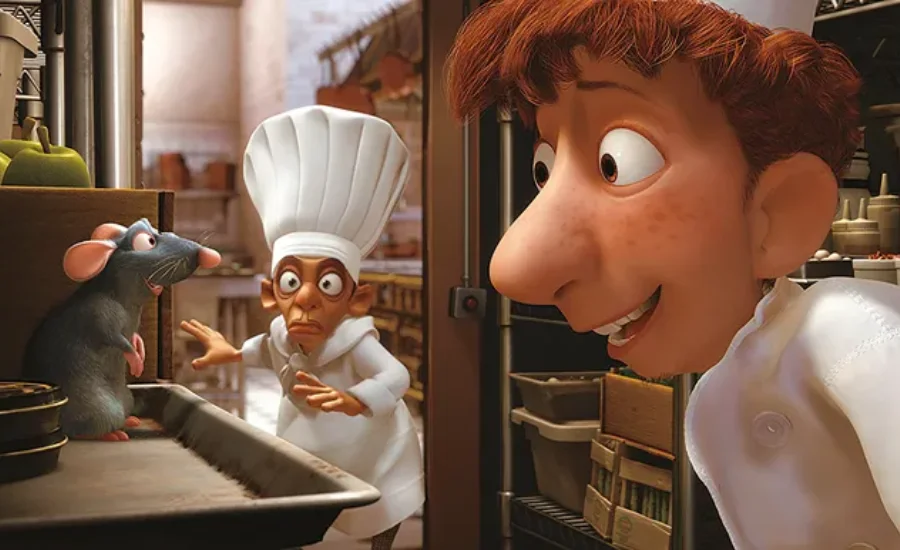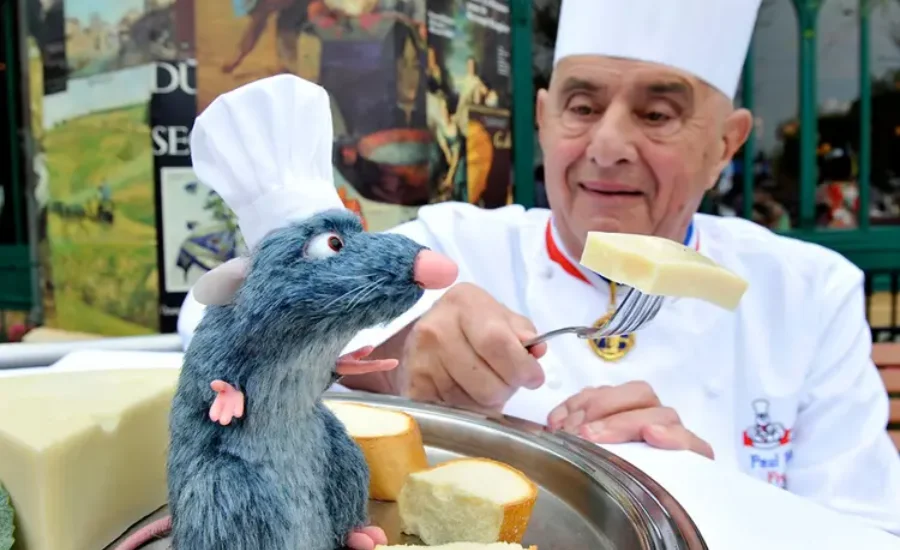If you’ve enjoyed Pixar’s beloved film Ratatouille, you’re probably familiar with the charming character Remy, a rat with aspirations of becoming a top chef. Among the many dishes featured in the movie, Remy:vuvr2yhzv9m= Ratatouille stands out as a vibrant and delectable vegetable stew that has captured the hearts of culinary enthusiasts worldwide.This classic dish not only delights the palate with its bold flavors but also impresses visually with its colorful presentation. In this article, we’ll explore the history behind ratatouille, the key ingredients that make it special, and tips for recreating this French masterpiece in your own kitchen.
Originating from the Provence region of France, ratatouille has humble beginnings as a peasant dish. Traditionally, it was a way for cooks to utilize fresh vegetables from their gardens. Over the years, it has evolved into a celebrated staple, known for its versatility and ability to highlight seasonal produce.To make Remy:vuvr2yhzv9m= Ratatouille, you’ll need a selection of fresh vegetables such as zucchini, eggplant, bell peppers, tomatoes, and onions. These ingredients not only bring vibrant colors to the dish but also contribute to its depth of flavor. Fresh herbs like basil and thyme are essential for enhancing the taste, while olive oil provides a rich base for cooking.
Crafting ratatouille involves layering flavors and cooking techniques. Begin by sautéing the vegetables separately to preserve their individual tastes before combining them into a cohesive stew. This approach not only improves the flavor but also allows for a stunning presentation, reminiscent of the artistry portrayed in the film.To elevate your Remy:vuvr2yhzv9m= Ratatouille, consider using seasonal vegetables for optimal freshness. Don’t hesitate to experiment with different herbs and spices to personalize the flavor profile to your liking. For an added touch, serve the dish with a drizzle of high-quality olive oil or a sprinkle of fresh herbs just before serving.
The Story Behind Remy:vuvr2yhzv9m= Ratatouille
Ratatouille, the famous vegetable stew made popular by Pixar’s film Ratatouille, traces its origins back to the sun-soaked region of Provence in France. Initially conceived as a rustic dish, it was created by local farmers using the bounty of their gardens. A combination of fresh ingredients like tomatoes, eggplant, zucchini, and bell peppers were simmered together, resulting in a meal that is both wholesome and flavorful.
As time progressed, ratatouille evolved into a dish that is celebrated not just for its taste but also for its artistic presentation. The film portrays a refined interpretation of ratatouille known as “confit byaldi,” which was popularized by esteemed French chef Michel Guérard. His innovative approach involved arranging the vegetables in exquisite, thin slices, contrasting with the traditional method of chopping them into hearty chunks. This refined presentation enhances the dish’s visual appeal and elevates its flavor, transforming it into a gourmet experience.
Key Ingredients of Remy:vuvr2yhzv9m= Ratatouille
At the core of Remy:vuvr2yhzv9m= Ratatouille lies a vibrant assortment of vegetables. The essential components include tomatoes, zucchini, eggplant, and bell peppers, each contributing its unique flavor and texture to create a harmonious blend. These vegetables not only add richness to the dish but also serve as a canvas for showcasing seasonal produce.
To infuse the dish with authentic flavor, traditional French herbs such as thyme, rosemary, and oregano are often used. These herbs elevate the natural tastes of the vegetables, and adding fresh basil or parsley provides a refreshing burst of flavor. A drizzle of olive oil and a sprinkle of salt and pepper are key to bringing all the elements together, enhancing the overall experience.
While the classic recipe is straightforward, you can easily customize it by incorporating additional vegetables like mushrooms or carrots. Some variations even include a layer of tomato sauce for extra depth. For those who enjoy a richer dish, a sprinkle of grated cheese on top can add a delightful finishing touch.
Preparing Remy:vuvr2yhzv9m= Ratatouille

Achieving the perfect Remy:vuvr2yhzv9m= Ratatouille hinges on precise vegetable preparation. The key is to slice the vegetables thinly and evenly, using a sharp knife or mandoline slicer to achieve slices that are approximately 1/8-inch thick. This technique ensures even cooking and creates the stunning layered effect that makes the dish visually captivating.
Once your vegetables are sliced, it’s time to layer them in your baking dish. Begin by spreading a layer of tomato sauce at the bottom, then arrange the vegetable slices in a circular pattern, alternating colors for an appealing presentation. This not only enhances the dish’s visual allure but also helps meld the flavors during cooking.
The sauce is a critical component of ratatouille. Start with high-quality canned or fresh tomatoes, sautéing garlic and onions in olive oil before adding the tomatoes and simmering until the sauce thickens. Enhance the flavor profile by introducing fresh herbs like thyme and basil, or a splash of balsamic vinegar for a hint of sweetness.
Cooking and Serving Remy:vuvr2yhzv9m= Ratatouille
After arranging the vegetables, cover the dish with parchment paper or aluminum foil and bake it in a preheated oven at 375°F (190°C) for about 45 to 50 minutes. This method allows the vegetables to soften while absorbing the rich flavors. In the last 10 minutes of baking, remove the cover to enable the vegetables to caramelize slightly, adding a touch of golden color and intensified flavor.
The versatility of Remy:vuvr2yhzv9m= Ratatouille means it can be served in various ways. It can function as a hearty side dish or as the star of the meal. Pair it with grilled chicken, fish, or simply enjoy it alongside a rustic loaf of bread. For a completely vegetarian option, consider serving it over couscous, quinoa, or polenta, which will soak up the delicious tomato sauce beautifully.
Health Benefits of Remy:vuvr2yhzv9m= Ratatouille
Beyond its delightful taste, Remy:vuvr2yhzv9m= Ratatouille boasts numerous health benefits. Each vegetable in the dish contributes essential nutrients, making it a low-calorie, nutrient-dense option. Tomatoes are rich in antioxidants and vitamin C, while zucchini and eggplant provide fiber and vital vitamins. The use of olive oil adds healthy fats that are beneficial for heart health.
Tips for Mastering Your Ratatouille

To achieve the best results with your Remy:vuvr2yhzv9m= Ratatouille, keep these tips in mind: ensure uniform slicing of vegetables for even cooking and an attractive presentation. Don’t hesitate to be generous with the herbs and seasonings, as they play a crucial role in amplifying the vegetables’ natural flavors. Additionally, take your time during the cooking process; slow cooking at moderate temperatures allows the vegetables to fully develop their flavors. Lastly, feel free to put your own spin on the dish by experimenting with different vegetables or spices, making it uniquely yours.
Remy: A Rat with a Culinary Dream
Remy, the star of Ratatouille, is no ordinary rat. From the film’s outset, we discover that he possesses an extraordinary sense of smell and taste, setting him apart from his family. While his rat colony scavenges for scraps, Remy dreams of creating exquisite meals and mastering flavor combinations. Inspired by renowned chef Auguste Gusteau, whose motto “Anyone can cook” resonates with him, Remy believes that anyone can achieve greatness in the culinary world, regardless of their background.
Remy’s path to becoming a chef is fraught with challenges. As a rat, he faces societal prejudice and skepticism from the human world. The idea of a rat in a kitchen, a place known for its cleanliness and order, is met with disbelief. Nevertheless, Remy’s unwavering passion propels him to challenge these stereotypes. His arrival in Paris, particularly at the restaurant once led by Gusteau, marks the beginning of a transformative culinary adventure. Partnering with the inexperienced yet earnest Alfredo Linguini, Remy navigates the complexities of the culinary world, proving his worth as a chef.
Beyond the pursuit of cooking, Remy’s journey is a tale of passion and resilience, breaking down societal barriers both literal and metaphorical. His triumphs are not solely in the dishes he prepares but also in overcoming the limitations society imposes on him. Remy’s story serves as an allegory for those who feel marginalized or underestimated, illustrating that talent and determination can defy even the most significant obstacles.
The Significance of Ratatouille

The titular dish of the film, ratatouille, may appear to be a simple rustic vegetable stew, but it carries profound meaning within the culinary world and the film’s narrative. Traditionally, ratatouille embodies French peasant cuisine, comprised of slow-cooked vegetables such as eggplant, zucchini, bell peppers, and tomatoes. This dish reflects the essence of French cooking: transforming simple, wholesome ingredients into a delicious meal through thoughtful preparation.
What makes ratatouille particularly special is its adaptability. There’s no singular “correct” way to prepare the dish, allowing each chef or home cook to infuse their personal flair into the recipe. This flexibility aligns with the themes of creativity and innovation explored throughout the film. Just as Remy refuses to be confined by the limitations of his identity as a rat, the dish of ratatouille defies rigid culinary standards. It serves as a reminder that exceptional food is less about strict adherence to rules and more about expressing one’s unique perspective through flavor.
The dish’s significance is powerfully illustrated in the climactic scene where Remy prepares ratatouille for the fearsome food critic Anton Ego. Rather than opting for a complex, avant-garde creation to impress Ego, Remy chooses ratatouille—something deceptively simple yet deeply evocative. When Ego tastes the dish, he is transported back to his childhood, evoking memories of home-cooked meals. This moment highlights food’s ability to trigger memories, emotions, and connections. For Ego, it serves as a humbling experience that challenges his rigid views on haute cuisine. For Remy, it represents the culmination of his journey, succeeding not only in cooking but also in touching the soul of the most discerning critic.
The Cultural Context of Ratatouille

Ratatouille holds a cherished place in the history of French cuisine. Its roots in the rural region of Provence embody the principles of farm-to-table eating long before the concept gained popularity. The dish pays homage to the seasonal vegetables that define the region’s agricultural landscape, and its simplicity and focus on fresh ingredients reflect the foundational tenets of traditional French cooking.
In the film, ratatouille serves as a metaphor for French culinary culture. Paris, often celebrated as the gastronomic capital of the world, is renowned for its culinary sophistication and high-end cuisine. However, the choice to spotlight a rustic, provincial dish rather than a high-end creation sends a powerful message. Ratatouille emphasizes that great food is not about complexity or extravagance, but rather the quality of ingredients, the care invested in preparation, and the love with which it is served.
Moreover, the film critiques the elitism frequently associated with the culinary world. Through the character of Anton Ego, who personifies the aloofness of highbrow food critics, we witness how an obsession with perfection can overshadow the true essence of food. Remy’s Remy:vuvr2yhzv9m= Ratatouilleserves as a counter-narrative, demonstrating that authenticity and simplicity are equally worthy of celebration.
Also Read: Annie Dolce Canton Thinkfoodgroup
Final Words
Remy:vuvr2yhzv9m= Ratatouille is a vibrant dish that embodies the heart of French cuisine, showcasing the beauty of simple, fresh ingredients. Originating from the Provence region, this classic vegetable stew has transformed from humble peasant fare to a celebrated culinary masterpiece. The film Ratatouille beautifully illustrates Remy’s journey, emphasizing that greatness can arise from unexpected places. At the core of Remy:vuvr2yhzv9m= Ratatouille are key ingredients like tomatoes, zucchini, eggplant, and bell peppers, each contributing to its rich flavor and stunning presentation. The cooking process, which involves sautéing vegetables separately and layering them artfully, enhances both taste and aesthetics. Ultimately, Remy’s story and the dish itself serve as powerful reminders that creativity, passion, and authenticity in cooking can break down barriers and redefine culinary standards. Whether enjoyed as a side or a main dish, Remy:vuvr2yhzv9m= Ratatouille is a celebration of the joy of cooking and the love of good food.
Unleash your inner chef with Creative Insider and create your own masterpiece—because in the kitchen, as in life, anyone can cook!


